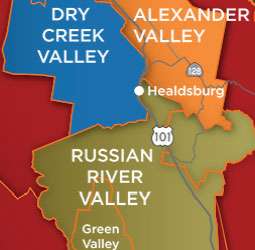Feeds

Winemakers: Think Twice About Tossing Dry Yeast into Cold Must Without Rehydration
Wineries are busy, and no time is busier than harvest. A typical year is always a scramble, but labor shortages, pandemic restrictions, wildfires, and climate change forcing an early crush can accelerate that into a mad dash. As a result, any way to save time is appreciated. One shortcut some winemakers use is throwing dry yeast into the juice without rehydrating it (directly inoculating).
It sounds innocent enough and checks a to-do item off their list faster than the hour or so it takes to rehydrate yeast. But winemakers may not realize that this technique may result in a fermentation that takes several days to start or becomes sluggish/stuck. So, they could be saving an hour only to lose days.
This technique may also diminish the wine’s aromatic expression, resulting in a less fruity and flavorful wine. For example, Sauvignon blanc requires the action of yeasts during fermentation to convert the precursors in grapes to the thiols that produce the wine’s typical tropical fruit aromas. That may not be possible if the yeast is not rehydrated properly.

Dr. Nichola Hall, the Technical Director of Fermentation and Enology at Scott Laboratories, advises using direct inoculation with caution. “Winemakers have been calling and asking me, ‘Is this the right thing to do?’” Some who haven’t encountered adverse outcomes often defend the practice by saying, “Well, it worked.”
Hall says “I remind them that if they want the yeast to shine, they should handle it properly. I say, ‘You’ve gone to all this time and effort and overcome every possible weather barrier to produce these grapes. Then, when it comes to making the wine, do you really want to take a shortcut?’”
Hall realizes some may not fully understand what happens during the yeast production process that causes the need for rehydration – During the manufacture of active dry yeast most intracellular water is removed, and “when you remove the water, it changes the structure of the cell.” Yeast goes through physiological changes when dried, crinkling in on itself (crenellation) so that all the internal components have to occupy a smaller volume. “It’s alive, but it is dormant. Yeast producers dry the yeast to make it easier to store and ship. When you get your active dried yeast, there’s 8% water left in it” she explains.

During rehydration “we want to give the cell back its water to return it to its proper shape and function. If you don’t, it compromises its integrity. Without rehydrating in water, a variety of things other than just water can enter the cell from the must (including pesticide residues, organic acids, SO2 and sugar). Instead, you want to replace like with like.”
The best way to recreate the yeast’s original cell structure and function is to rehydrate it in clean, chlorine-free 100°F water for 20 minutes. The rehydrated yeast can’t just be dumped into the cold must either but should be added slowly and given a bit of time to drop closer to the must’s temperature.
Hall has a unique love for and expertise in yeast. She has a Ph.D. in microbial physiology from Abertay University in Dundee, Scotland and was the Director of Microbiology at Bronco Wine Company. She’s at home at Scott Laboratories, a yeast supply company that was instrumental in bringing active dried yeast to the wine industry in North America. So, when she says, “I really hate it when people mistreat my yeast,” winemakers would be well advised to listen.
If you have questions, you can reach Nichola at nicholah@scottlab.com or go to www.scottlab.com.

About

The mission of the Wine Road is to increase awareness of Alexander, Dry Creek and Russian River Valleys through education and marketing while promoting Sonoma County as the year-round wine country destination.
Wine Road is a member driven, winery association.
Founded in 1976 with 9 wineries along the Russian River in Sonoma County.
As of 2017 the Wine Road now consists of 197 wineries members and 54 associate lodging members.
The Wine Road is governed by a Board of Directors consisting of 10 winery and 3 lodging representatives. An Executive Director manages the day-to-day operations.
Our goal is simple – Bring people to northern Sonoma County to embrace the beauty, sample the wines and meet the cast of characters that work the farms, prepare the meals, make the wines and share their warm hospitality.
Once you visit…we know you’ll be back!
Wine Road
Heaven Condensed
Contact
Contact List
| Title | Name | Phone | Extension | |
|---|---|---|---|---|
| Executive Director | Beth Costa | beth@wineroad.com | 433-4335 | |
| Events Manager | Debbie Osborn | debbie@wineroad.com | 433-4335 | |
| Office Manager | Laura Stafford | laura@wineroad.com | 433-4335 |
Location List
| Locations | Address | State | Country | Zip Code |
|---|---|---|---|---|
| Wine Road | P.O. Box 46, Healdsburg | CA | United States of America | 95448 |



